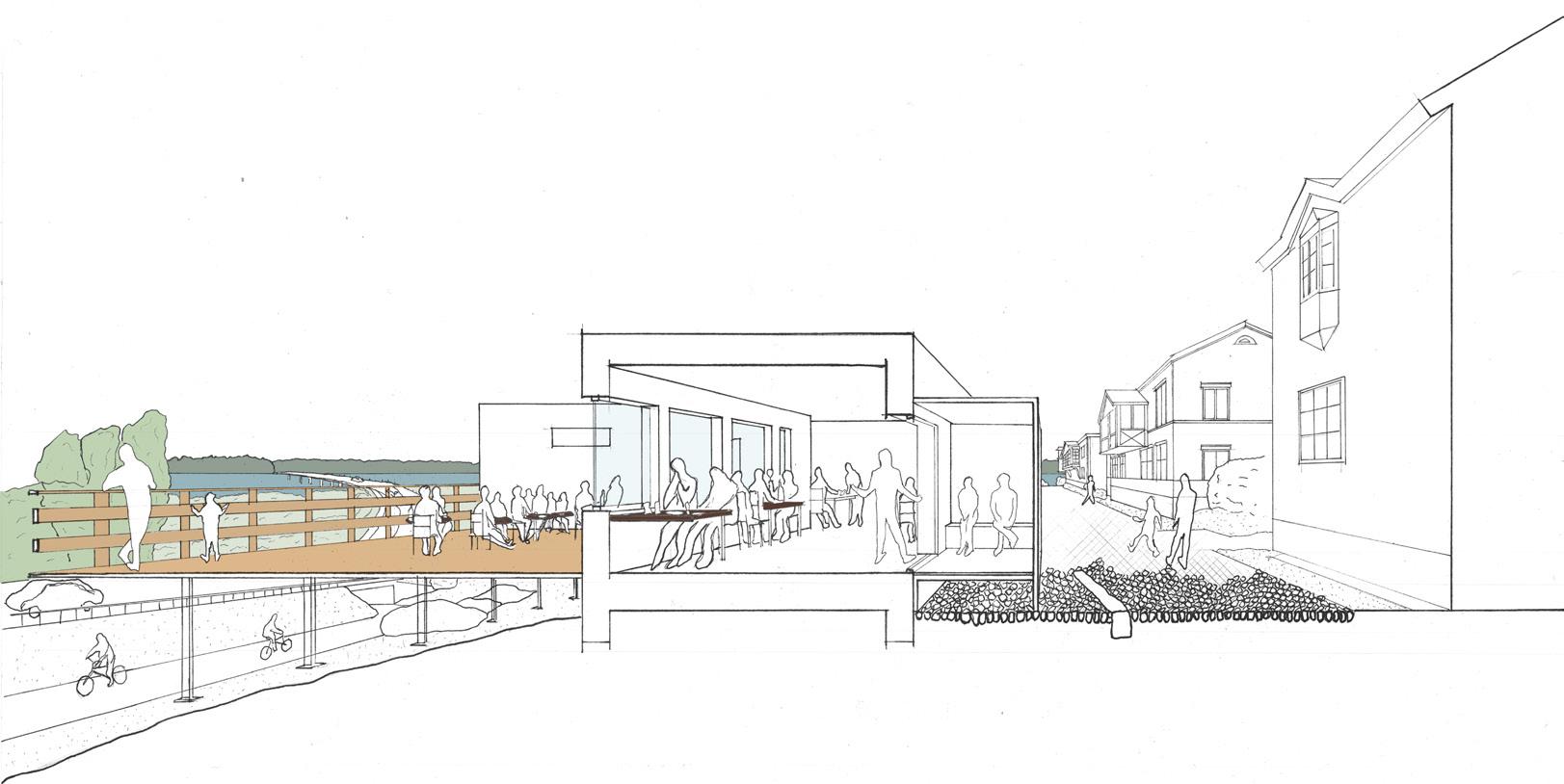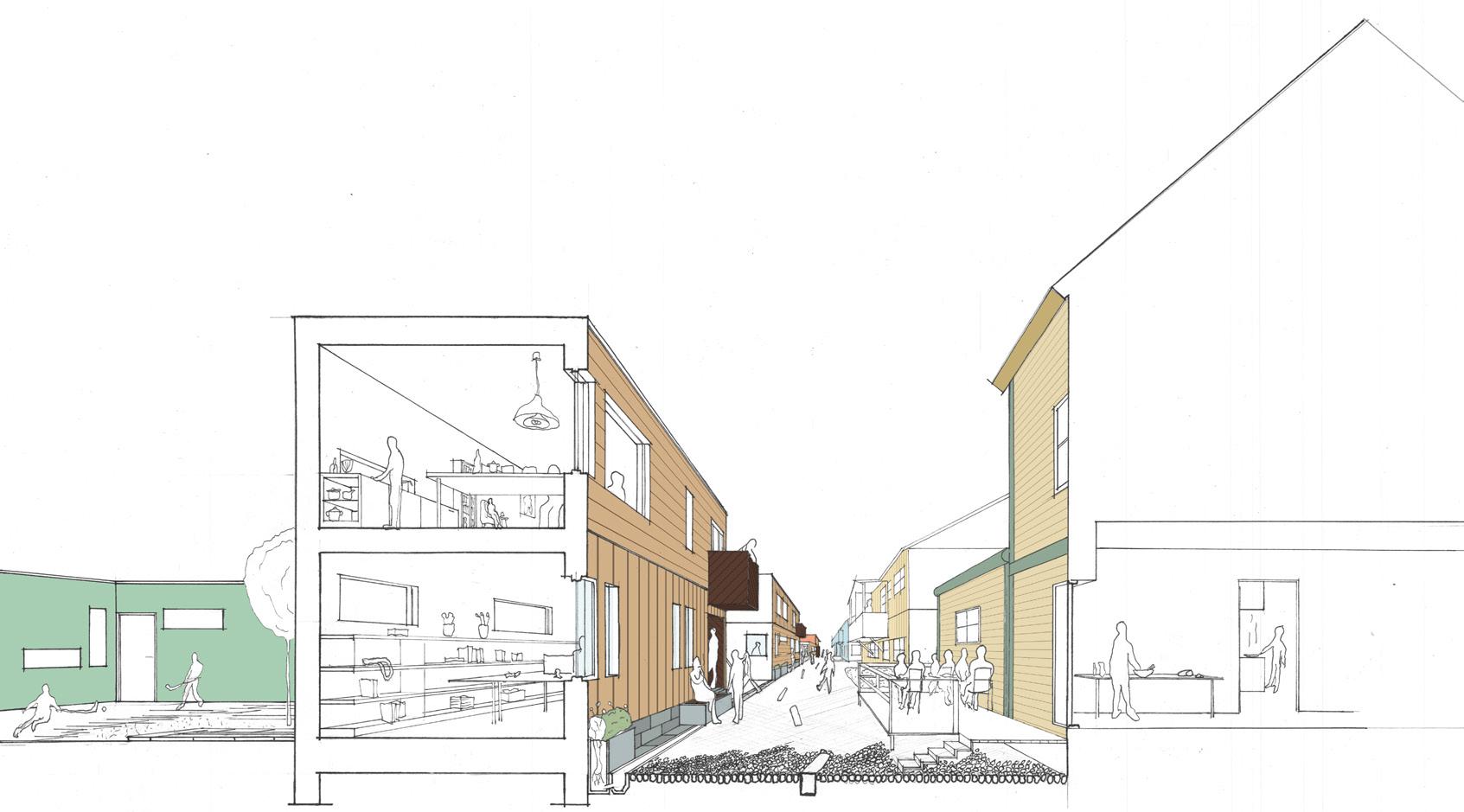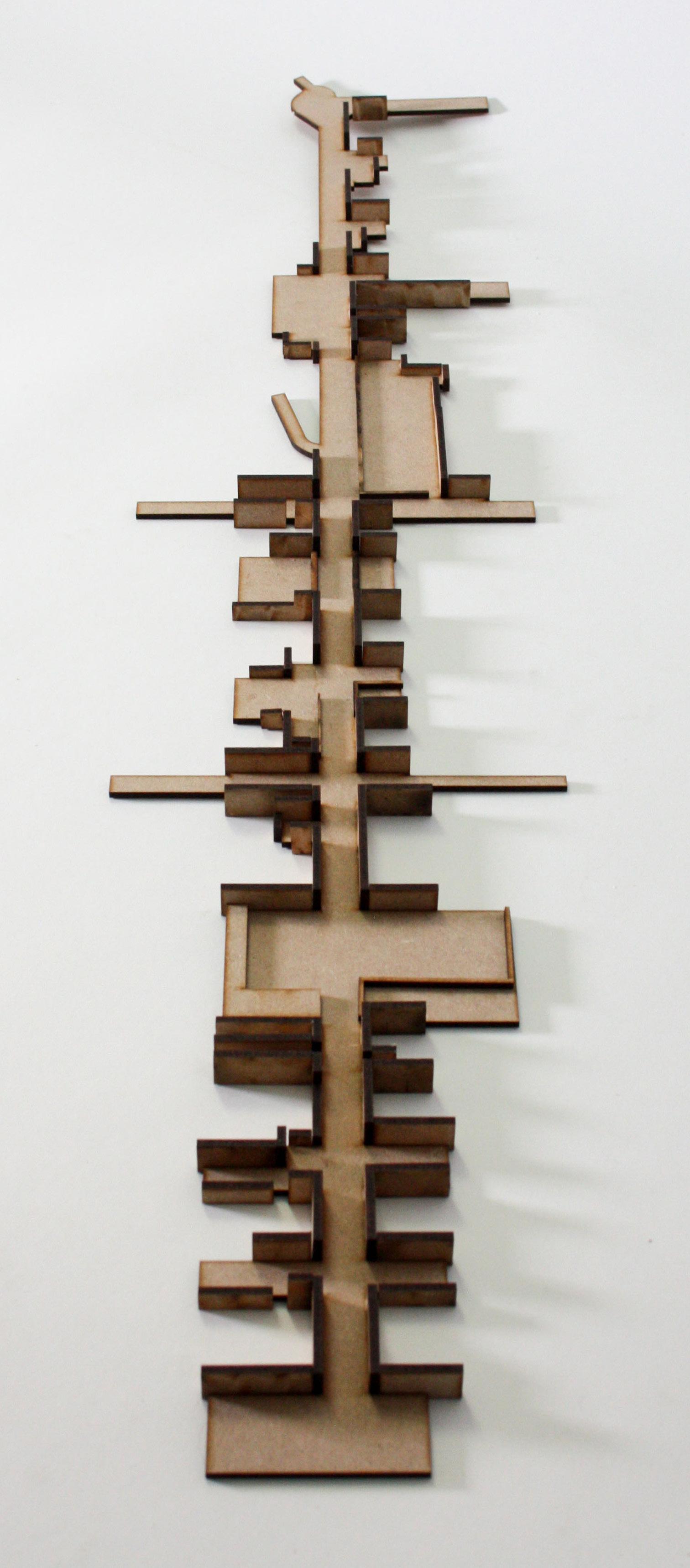
1 minute read
Sequence Lane
Third Year Bachelor Project
Sequence lane is a narrative that is told by space on different scales. The project works to re-animate the old high street in the small town of Holmsund in rural northern Sweden. Holmsund used to be the end station for the logging industry along the Umeå river, where factories chopped up the wood which then was shipped of to Europe.
Advertisement
The ‘street’ has lost its role as a social space in many small towns and communities such as Holmsund. It has been taken over by the car and re-routed into the closest big city centre. Sequence Lane reintroduces the street as a place for meetings and homogenizes the social urban platform.
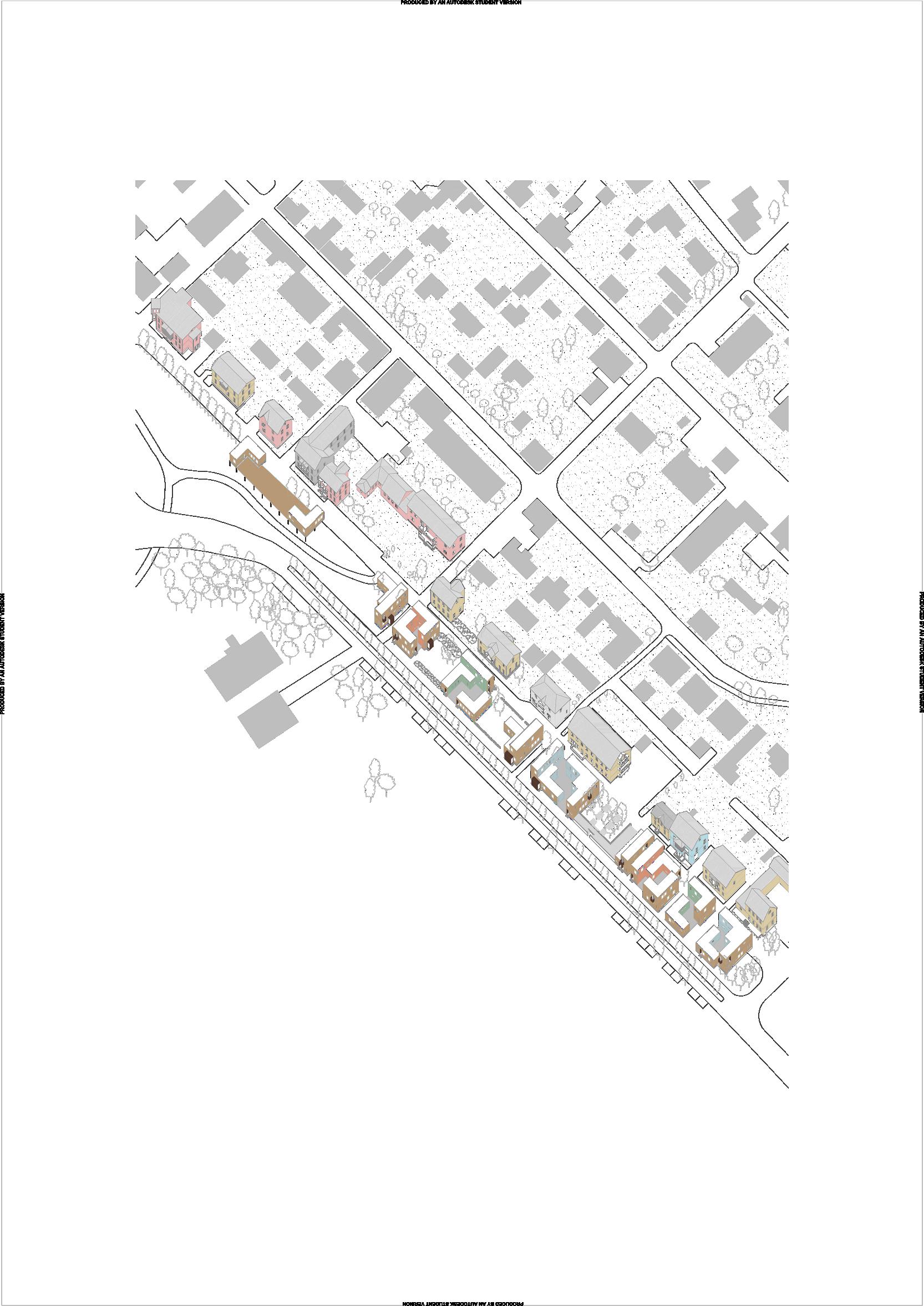
My street program is organised according to the characteristics and memories of the people that live [and lived] along ‘Gamla Storgatan’. A modular building type focusing on the work/life duality is used as a building block that responds to a vernacular architecture and urban language of free-standing wooden villas with permeable yards. The programmatic functions of the street are built on case studies of successful streets around Sweden with similar size. This study along with memories of people living & lived on the street forms the narrative of the street.
The street opens with a dense, shop focused part which opens up in a terraced market that continues into the lush public gardens, lined with cafés and services and ends on the top of the hill overlooking the Umeå river.
The Look-out [D - D]
The Gardens [C - C]

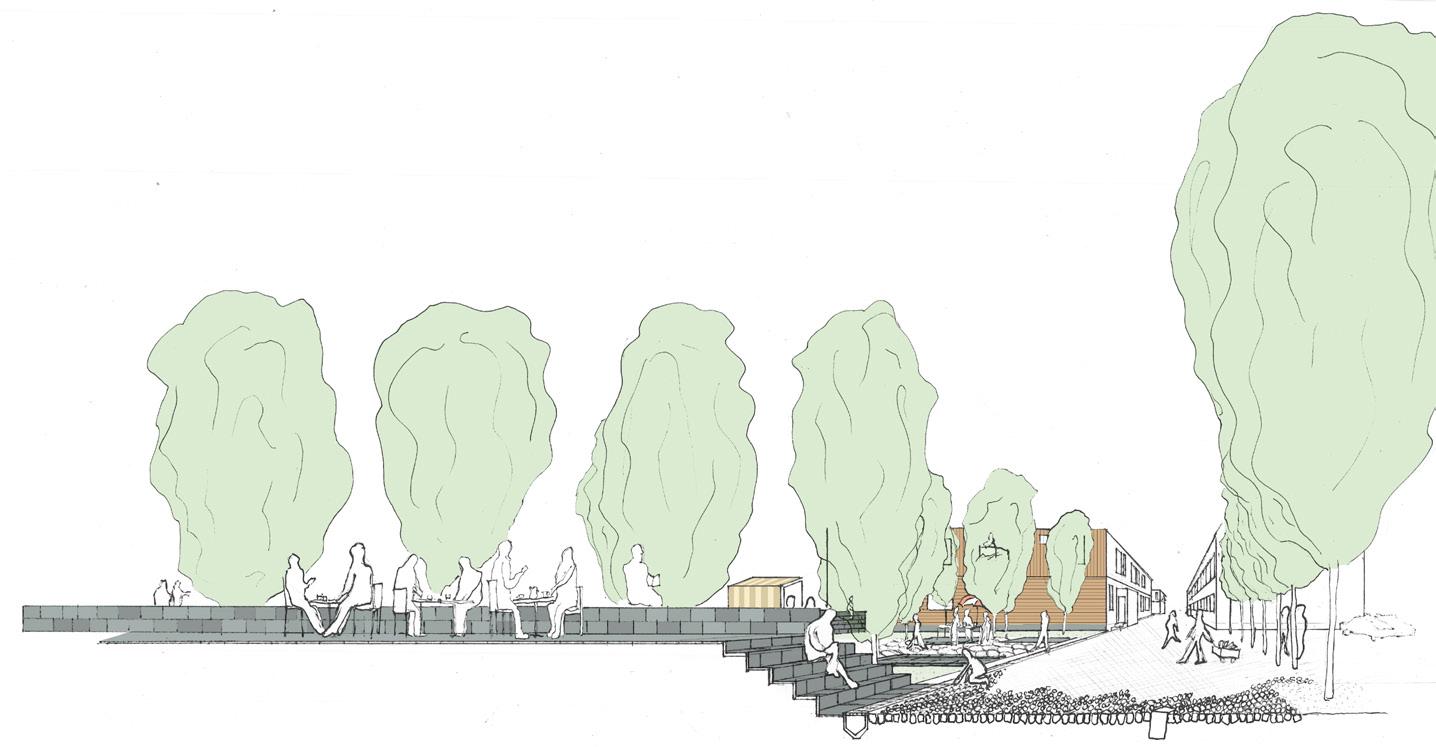
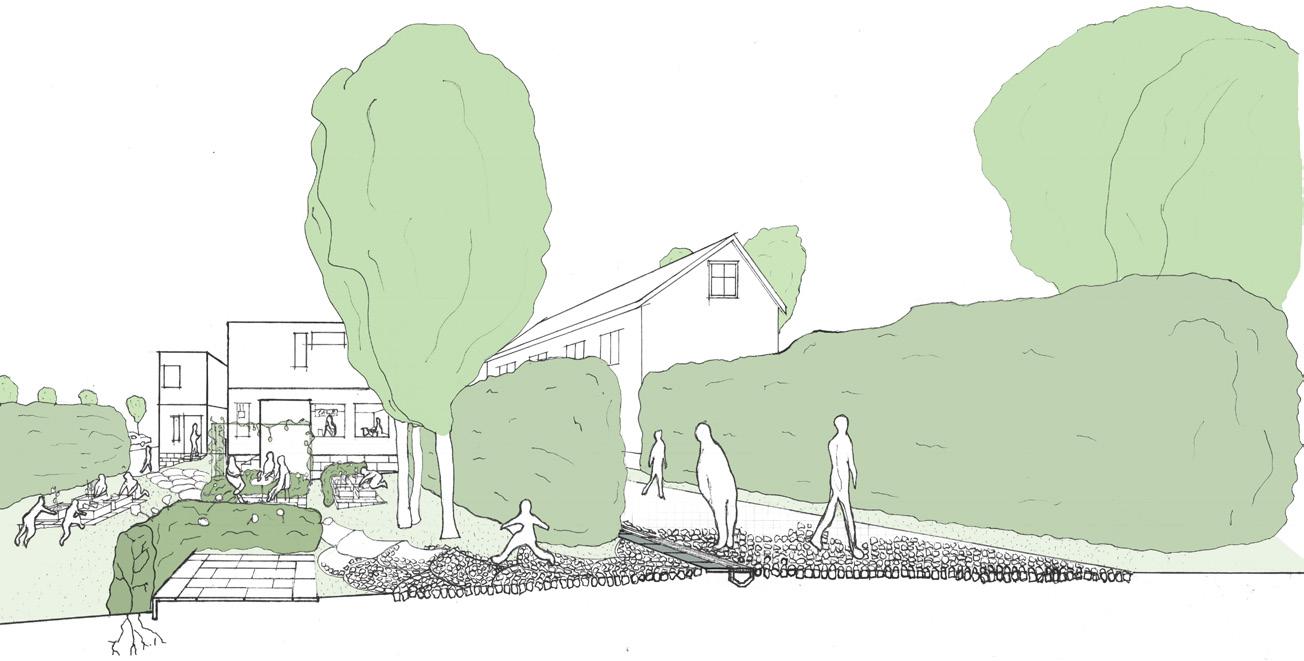
The Market Terrace [B - B]
